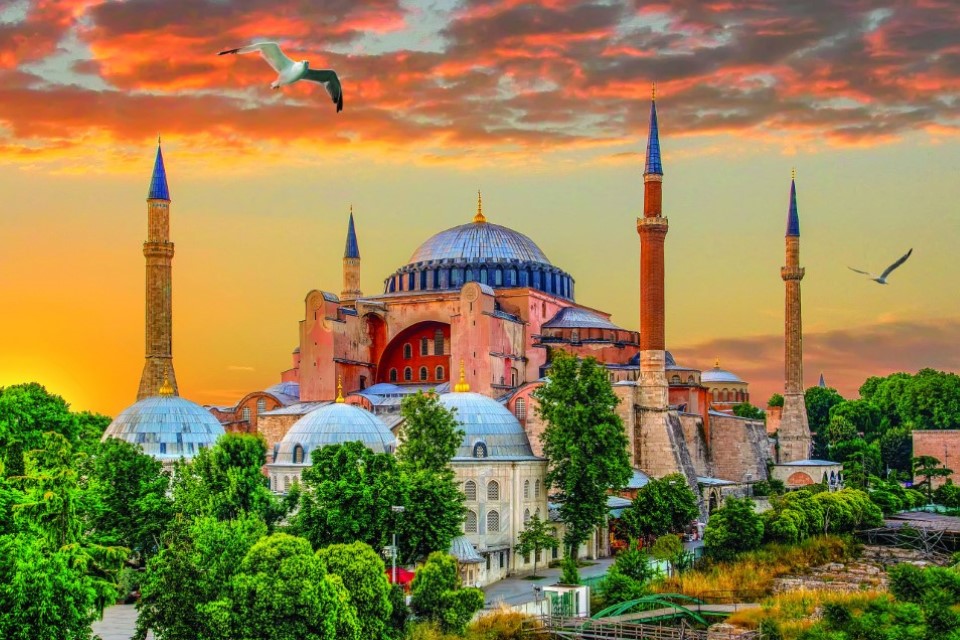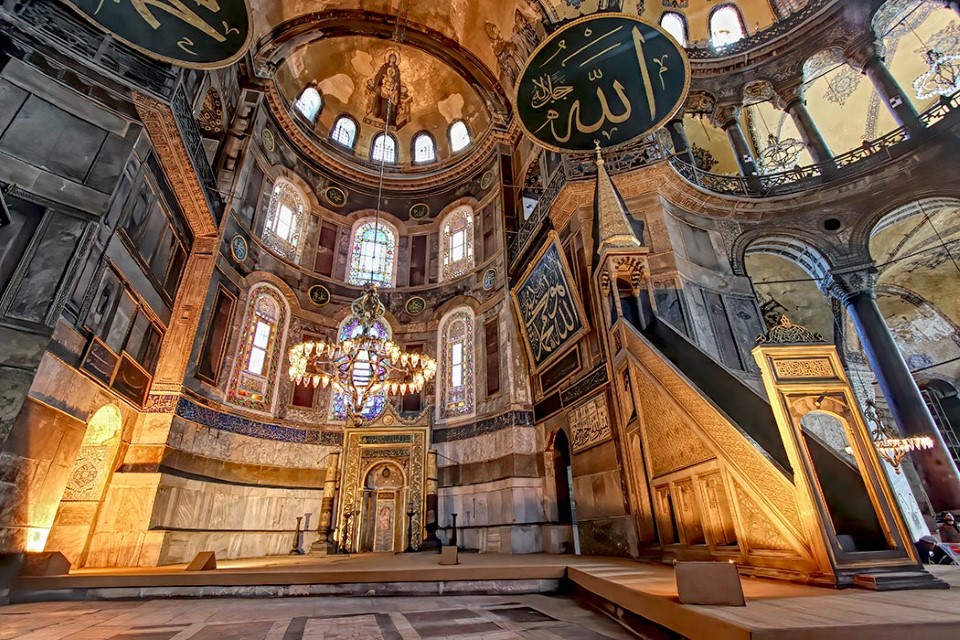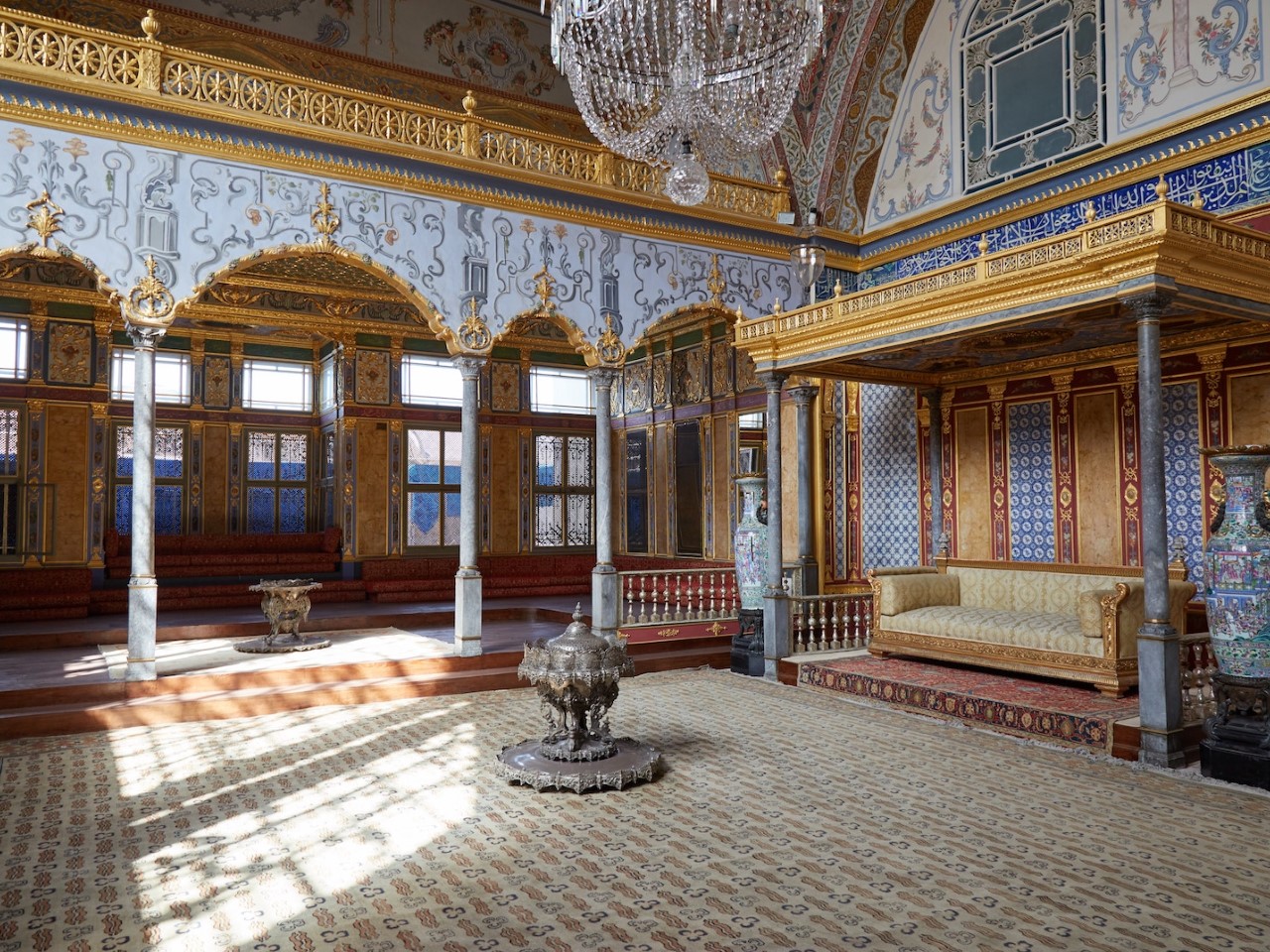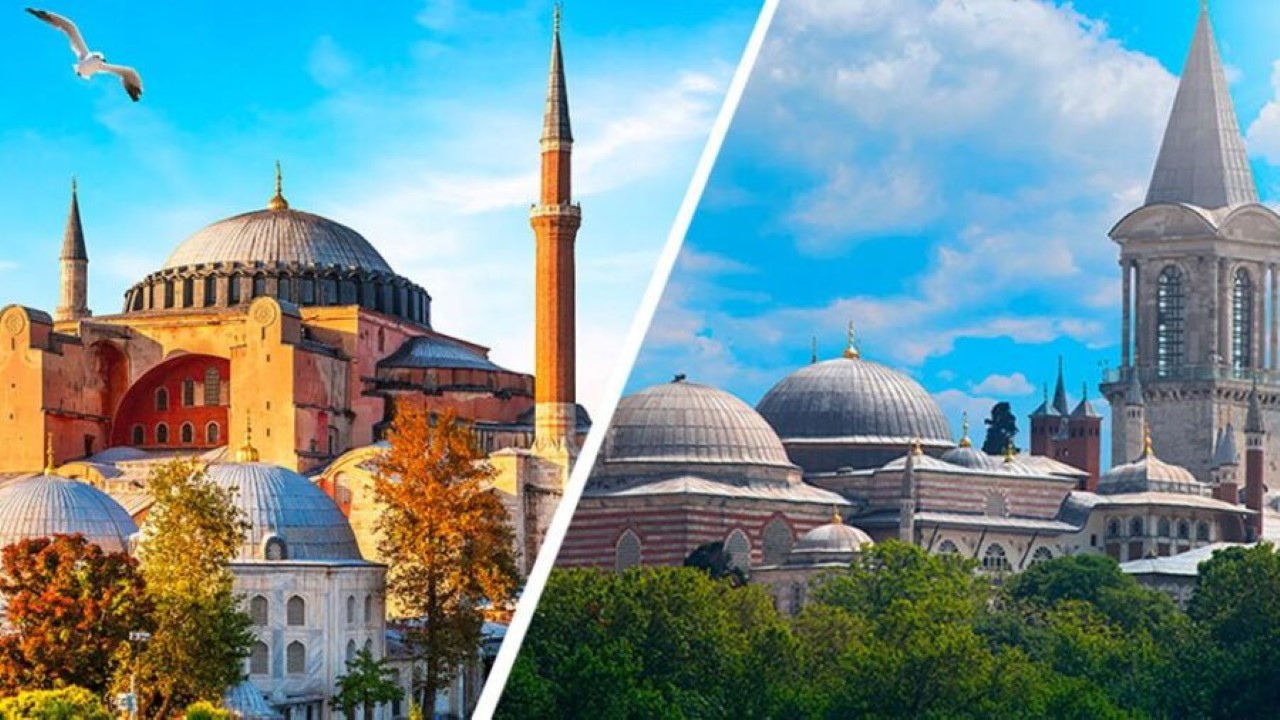Hagia Sophia and Topkapi Palace: The Crown Jewels of Istanbul
Istanbul is a city where history and culture intertwine seamlessly, offering a glimpse into the grandeur of past civilizations. Two of its most iconic landmarks, Hagia Sophia and Topkapi Palace, stand as testaments to the city’s rich heritage. These historical marvels have witnessed the rise and fall of empires, hosted sultans and emperors, and served as centers of religion, politics, and art. In this blog post, we’ll explore the fascinating history of both sites, the pivotal events that shaped them, and their significance in modern times.

Hagia Sophia: The Marvel of Architecture and Faith
A Byzantine Masterpiece (537 AD – 1453 AD)
Hagia Sophia, meaning “Holy Wisdom,” was originally built as a church in 537 AD under the order of Byzantine Emperor Justinian I. Designed by the architects Anthemius of Tralles and Isidore of Miletus, it was considered the most magnificent architectural achievement of its time.
The structure was an engineering marvel, featuring a massive dome spanning 32 meters (105 feet) in diameter, which seemed to float above the vast interior. For nearly 1,000 years, it remained the largest cathedral in the world and served as the spiritual heart of the Eastern Orthodox Church.
The Ottoman Transformation (1453 AD – 1935 AD)
When Sultan Mehmed II (Mehmed the Conqueror) captured Constantinople in 1453, he ordered Hagia Sophia to be converted into a mosque. The Ottomans added minarets, a mihrab (prayer niche), and Islamic calligraphy, while preserving many of its Christian mosaics. For almost 500 years, Hagia Sophia was the most important mosque in the Ottoman Empire, symbolizing the triumph of Islam and the city’s new identity.
Museum and Mosque Again (1935 – Present)
In 1935, Mustafa Kemal Atatürk, the founder of modern Turkey, converted Hagia Sophia into a museum, emphasizing its universal cultural significance. However, in 2020, the Turkish government reclassified it as a mosque, reopening it for Muslim prayers while maintaining its historical and touristic importance.
Today, Hagia Sophia stands as a powerful symbol of religious coexistence, architectural brilliance, and the shifting tides of history.


Topkapi Palace: The Seat of Ottoman Power
Construction and Early Years (1460 AD – 1517 AD)
Following the conquest of Constantinople, Sultan Mehmed II ordered the construction of Topkapi Palace in 1460, completing it in 1478. Located on the Sarayburnu Peninsula, the palace offered breathtaking views of the Bosphorus, the Golden Horn, and the Sea of Marmara.
Topkapi Palace was more than just a royal residence; it was the administrative, educational, and ceremonial center of the Ottoman Empire for nearly 400 years. The palace complex covered 700,000 square meters, housing thousands of courtiers, concubines, and officials.
The Harem: A World Within a World
One of the most intriguing sections of Topkapi Palace is the Harem, where the sultan’s family and concubines lived under strict regulations. The Harem was ruled by the Valide Sultan (Mother of the Sultan), who wielded immense power over palace affairs.
Notable figures, such as Hürrem Sultan (Roxelana), the wife of Suleiman the Magnificent, played significant roles in shaping Ottoman politics, challenging the stereotype that the Harem was merely a place of pleasure.
Topkapi’s Role in Islamic History
Topkapi Palace also houses some of the most sacred relics in Islam, including the Prophet Muhammad’s cloak, sword, and footprint. These artifacts are displayed in the Privy Chamber, drawing thousands of visitors each year.
The End of an Era (19th Century – Present)
By the 19th century, the Ottoman sultans moved to more modern palaces like Dolmabahçe Palace, marking the decline of Topkapi as a royal residence. In 1924, following the abolition of the Ottoman Caliphate, the palace was transformed into a museum, preserving its historical grandeur for future generations.

Hagia Sophia and Topkapi Palace Today
Both Hagia Sophia and Topkapi Palace remain among Istanbul’s most visited landmarks, drawing millions of tourists annually. While Hagia Sophia continues to function as a mosque, it remains open to visitors who wish to admire its Byzantine mosaics and Islamic calligraphy.
Topkapi Palace, now a museum, offers visitors a glimpse into the opulence of the Ottoman court, from bejewelled swords to the famous Spoonmaker’s Diamond (Kaşıkçı Elması), one of the largest diamonds in the world.
Conclusion
Hagia Sophia and Topkapi Palace are more than just architectural wonders; they are living chronicles of Istanbul’s past. Hagia Sophia tells the story of the city’s spiritual evolution, while Topkapi Palace embodies the power and intrigue of the Ottoman Empire.
Visiting these two landmarks is like stepping into history, where emperors and sultans once walked, where prayers echoed through grand domes, and where centuries of culture continue to inspire. Whether you are drawn by faith, history, or sheer admiration for their beauty, these monuments remain timeless symbols of Istanbul’s enduring legacy.
FAQs About the Hagia Sophia and Topkapi Palace
The Hagia Sophia was completed in 537 CE during the reign of the Byzantine Emperor Justinian I, making it over 1,400 years old.
Yes, both sites are located in the Sultanahmet district, so it’s possible to visit both in a single day. However, due to their size and significance, it’s recommended to allocate several hours to explore each site.
Yes, the Hagia Sophia is currently open to tourists. It functions as a mosque, but it also welcomes visitors who come to admire its history and architecture. Modest clothing is required for visitors.
Visitors to Topkapi Palace can explore the courtyards, the harem, the treasury, the palace kitchens, and the beautiful gardens with panoramic views of the Bosporus. The Topkapi Treasury is home to many historical treasures, including jewels and sacred relics.
Yes, both sites have an entrance fee. However, the Hagia Sophia is free to visit for prayer services, and the fee for Topkapi Palace includes access to various sections of the palace, including the harem and treasury.
